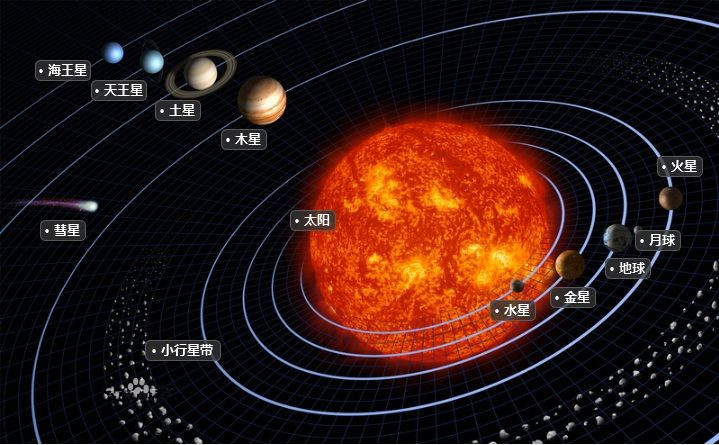(单词翻译:单击)
What Shoemaker and his colleagues found was that there was more risk out there—a great deal more—than anyone had ever imagined.
苏梅克和他的同事们发现的是,外层空间存在着比想像的还要多——多得多——的危险。
Asteroids, as most people know, are rocky objects orbiting in loose formation in a belt between Mars and Jupiter. In illustrations they are always shown as existing in a jumble, but in fact the solar system is quite a roomy place and the average asteroid actually will be about a million miles from its nearest neighbor. Nobody knows even approximately how many asteroids there are tumbling through space, but the number is thought to be probably not less than a billion. They are presumed to be planets that never quite made it, owing to the unsettling gravitational pull of Jupiter, which kept—and keeps—them from coalescing.
许多人都知道,小行星是岩质物体,散落在火星和木星之间,在一片狭长空间里运行。在插图里,它们看上去总是挤作一团;实际上,太阳系是个很宽敞的地方,普通的小行星离它最近的邻居大约有150万公里之远。谁也说不清大概有多少颗小行星在太空里打滚,但据认为这个数字很可能不少于10亿颗。人们推测,小行星本来可以成为行星,但由于木星的引力很不稳定,使得它们无法——现在依然无法——结合在一起,因此它们的目的从未实现过。
When asteroids were first detected in the 1800s—the very first was discovered on the first day of the century by a Sicilian named Giuseppi Piazzi—they were thought to be planets, and the first two were named Ceres and Pallas. It took some inspired deductions by the astronomer William Herschel to work out that they were nowhere near planet sized but much smaller. He called them asteroids—Latin for "starlike"—which was slightly unfortunate as they are not like stars at all. Sometimes now they are more accurately called planetoids.
第一次发现小行星是在19世纪初。第一颗小行星是一位名叫朱塞比皮亚齐的西西里岛人在该世纪的第一天发现的——它们被看成行星。头两颗小行星被命名为谷神星和智神星。经过天文学家威廉·赫歇耳凭着灵感的多次演绎,认定它们远没有行星大,而是要小得多。他把它们称为小行星——拉丁语的意思是“像星”——这有点儿不幸,因为小行星压根儿不是星。现在他们有时被比较准确地称作类星体。
Finding asteroids became a popular activity in the 1800s, and by the end of the century about a thousand were known. The problem was that no one was systematically recording them.
19世纪初,寻找小行星成了一项很热门的活动。到该世纪末,已知的小行星多达1000颗左右。问题是谁也没有对它们进行系统的记录。


